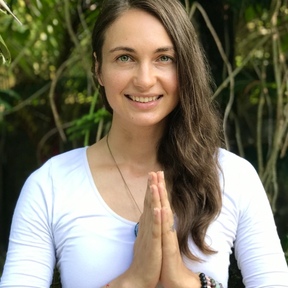Agenda
Conference Schedule
Day 1 full schedule
November 23, 2023 @ 09:30 - 15:30
Observational analytical study to assess Asthikshaya in walkers and in non-walkers with special reference to Osteoporosis by Evaluating Bone Mineral Density and Serum Calcium.
Bhairav B. Kulkarni
DirectorDr.Vedprakash Patil Ayurved College & Research Institute
India
ABSTRACT
Ayurveda is known as the science of life. The main aim of Ayurveda is to maintain health of the healthy person and to cure the illness of diseased person. In Ayurved nidanpanchaka is described as tool of disease diagnosis. Upashaya in nidanpanchaka has described in 18 types. Among that Hetuviparitathkari Upashay is one type which can be also specified as Aharatmak ,Viharatmak and Aushadhiupashay. According to Ayurveda;Vat , Pitta and Kapha are the pillars(tristhuna) of human body. Vat and Asthi has Ashrayashrayibhav and inversely proportional to each other so Asthikshaya causes Vatprakopa according to samhitas.[5] But here we are studying walking as a Upashayatmak factor for Asthikshaya.
To assess role of walking in prevention of Asthikshaya with special reference to Osteoporosis by evaluating Bone Mineral Density and Serum Calcium (BMD) and Serum calcium levels in Asthikshaya. It is observational comparative analytical study.Duration of study will be 18 months. Total number of 250 subjects will be selected according to criteria, divided in to two groups. Group A – 125subjects-active walkers. Group B – 125 subjects-non active walkers.
Bone densitometry: A bone mineral density (BMD) test measures how much calcium and other types of minerals are in an area of your bone. There are two types of this test. Here I will using the following type.Peripheral DEXA (p-DEXA). These smaller machines measure the bone density in your wrist, fingers, leg, or heal. The most common and accurate way uses a dual-energy x-ray absorptiometry (DEXA) scan. DEXA uses low-dose x-rays.
Measurements: T-score compares your bone density with that of a healthy youngwomen
-
normal : A T-score is within the normal range if it is -1.0 or above.
-
abnormal: T-score- Between -1 and -2.5, you may have early bone loss (osteopenia).
Keywords – Asthikshya, Walkers non walkers
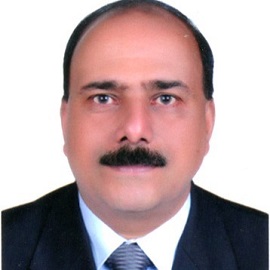
Radhakrishnan. K
Principal ScientistState Medicinal Plants Board, Kerala
India
ABSTRACT
From time immemorial man has been depending on natural resources for food, shelter, medicine, fiber and other material requirements. The traditional uses of natural resources were developed through trial and error and the knowledge relating to these were transferred from generation to generation by word of mouth, stabilized and have no written literature. This period can be considered as the past period. The present period in my view can be considered with origin of the subject Ethnobotany in the 19th century , the term coined by John W Harshberger in 1896 who defined it as the “ Plants used by primitive or aboriginal people and Ethnobiology by Edward Casetter in 1935 as “ Utilization of plants and animal life by primitive people “. Recently the terms refer more specifically about the study of less sophisticated communities viz. tribal/rural communities and their association, interaction and interrelationship with the ambient natural resources. This area is essentially a socio-ecological research concerned with the study of the traditional knowledge system, culture, belief etc .of the above mentioned communities with the objective to preserve/conserve, those which are fast disappearing by documenting them and at the same time undertaking scientific investigations to bring out products useful to the society. The study adopts a systems approach rather than a sectarian approach and it is essentially a multidisciplinary program of research with transdisciplinary approach to study the problems and find solutions where ever necessary. Ethnomedicine is one of the main components of this area which deals with the traditional usage of natural resources for treating a variety of ailments, which is cheap and with less or no side effects. Moreover it had given/ gives leads to the development of drugs in all other systems of medicine. Hence considered as the “Mother of all systems of medicines”. The future discusses the prospects of Ethnomedicine in the light of newly emerging diseases viz. AIDS, Nipa and Covid-19 etc. The present communication is presented with theoretical references and about 25 years field experience of the author, as an Ethnobotanist, who worked among the tribal and folk communities of Kerala State,India.
Keywords : Ethnomedicine, Ethnobotany, traditional communities, natural resources, chronology.

Murat Topoglu
PresidentTurkish Acupuncture Society
Turkey
ABSTRACT
Last 25 years laser acupuncture has been applied very successfully for over all the doctors in the world.
Laser means Light Amplification by Stimulated Emission of Radiation. The one is afraid of acupuncture needles; Laser is very comfortable for acupuncturists and the patients, especially for child's diseases.
1 calorie= the energy in order to increase 1-degree Celsius of 1 gr water
Laser (Light Amplification by Stimulated Emission of Radiation):.
First; It has been thought by Albert Einstein in 1917. But; Maiman first built laser apparatus in 1960
The smallest particle of the unit is ATOM. Smallest of the particle of Light is PHOTON
Every cell of human absorbs 100.000 Light photons.
OBJECTIVE: There are many acupuncture laser equipements such as helium neon ,diode,Ga Al As
METHODS:
The acupuncturist choses the acupoints according to TCM.Session time are generally very short.(15-20 minutes)
LOW LEVEL LASER THERAPY (LLLT)
The Features of laser Light
- Cohorence
- Monochromatic
- Photons are not divergence
- Powerful Light
- Very narrow(Nanometer)
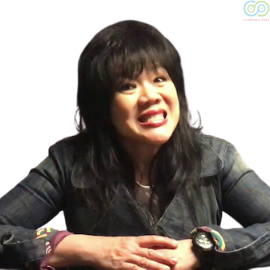
Wei Ling Huang
AcupuncturistMedical Acupuncture and Pain Management Clinic
Brasil
ABSTRACT
Statement of the Problem: Insomnia is a sleep disorder that regularly affects millions of people worldwide. Individuals with insomnia find it difficult to fall asleep and stay asleep. It commonly leads to daytime sleepiness, lethargy, mood swings, anxiety, stress and a general feeling of being unwell, both mentally and physically. The purpose of this study is to demonstrate the results of a treatment using auricular acupuncture associated with Chinese dietary counselling. A second goal is to demonstrate why erroneous eating habits can be one of the causes of insomnia. Methodology & Theoretical Orientation: To prove that insomnia can be treated with auricular acupuncture and Chinese dietary counselling, a retrospective research of over 1500 patients’ records was done. 55 (3.66%) of these patients were selected based on having insomnia diagnosis in their records and had performed previous treatment with auricular acupuncture associated with Chinese dietary counselling. Findings: Of the total amount, 30 (83.33%) considered their insomnia as a main symptom which affected their lives daily. After the first month of treatment (four sessions), more than 80% of the patients felt improvement of their insomnia symptom. Conclusion & Significance: The majority of patients who had undergone auricular acupuncture associated with Chinese dietary counselling for the treatment of insomnia had been completely cured or had significant improvement. The study also concluded that patients who not compromised with the dietary changes did not achieve the same positive results as those who agreed with them.
Haematological and hepatological effects of pito, burukutu-guinea corn and burukutu-millet in male albino rats

Chinedu Imo
Assistant ProfessorFederal University Wukari
Nigeria
ABSTRACT
Introduction: Burukutu and pito are alcoholic beverages produced mainly from grains such as guinea corn and millet. This study investigated the health implications of pito, burukutu-guinea corn and burukutu-millet in male albino rats: a haematological and liver function approach.
Methods: Three locally brewed beers were purchased from locally brewed beer joint in Wukari, Nigeria. Twenty male albino rats were used and were randomly distributed into four groups of five rats each. Group 1 served as normal control, while groups 2, 3 and 4 were administered pito, burukutu-Guinea corn and burukutu-millet (10mL/kg bwt) respectively for 21 days before being sacrificed.
Results: Result showed that ALT and AST activities increased in all the groups administered the different beer compared to the control. Cholesterol increased in group 2, but decrease in group 4. Potassium and glucose reduced in all test groups compared to the normal control. The differences in cholesterol, potassium and glucose levels are statistically less-significant (p>0.05) compared to the control. The liver histoarchitectural state of the test animals administered the beers compared to the control animals showed the beers had toxic effect on the animals. There was evidence of infiltration and distortion of some regions of the liver tissue in the test animals. This agrees with the results of serum biochemical parameters evaluated. The WBC, LYM and GRA increased in group 3 and reduced in groups 2 and 4 compared to the control. The MID reduced in all the test groups compared to the control. RBC, Hb and HCT increased in all the groups compared to the control. The MCV increased only in group 4 and decreased in groups 2 and 3. The MCH, MCHC and RDWc reduced in all the test groups, while PLT, PCT, MPV and PDWc increased in all the test groups compared to the control.
Conclusion: This study has shown that constant administration of pito, burukutu-guinea corn and burukutu-millet in the test animals for a long duration caused alterations and negative effect on the liver function, but may not interfere negatively with the Hb and RBC count.
In silico polypharmacological screening of natural products targeting STAT3-mediated chronic rheumatoid synovitis

Dr. Praveen Deepak
Assistant ProfessorSwami Sahajanand College, Bihar
India
ABSTRACT
Signal transducer and activator of transcription factor 3 is one of the members of a family of transcription factors that play an active role in promoting synovitis and joint erosion in rheumatoid arthritis patients leading to crooked appendages and severe pain in the long term. However, the role of STAT3 in the pathogenesis of rheumatoid arthritis has not been explored for the STAT3-targeted design and development of new antirheumatic therapeutic drugs. Most of the drugs used in clinical practices are either NSAIDs or DMARDs, which suppress inflammatory responses by blocking cyclooxygenase enzymes that inhibit the production of prostaglandin to relieve pain. These drugs are not plant-based and have major side effects on patients. In this study, STAT3 was targeted through in silico analysis to find natural products from databases that have a potential role in inhibiting STAT3 in the inflammation reaction. This included data mining, functional enrichment analysis, and other systems-based analytical approaches. I found 108 genes associated with an inflammatory response mediated by STAT3, which were further enriched to yield 16 STAT3 high interactive genes. The Herb Ingredients’ Target Analysis (HIT Analysis) by STAT3 high interactive genes revealed that 79 natural products directly interact with STAT3, 3 with JAK1, 13 with JAK2, 4 with JAK3, and 9 with JAK-binding Proteins.
Infertility with poor ovarian reserve: is egg donation the only option or does traditional medicine give hope?
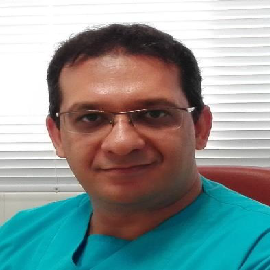
Mehdy Ghaeminia
MD,AcupuncturistIranian Scientific Acupuncture Association
Iran
ABSTRACT
Introduction: Ovarian insufficiency is a major problem during reproductive ages. Patients usually present with either infertility or early onset menopausal symptoms. In the majority of cases, egg donation is suggested as the ultimate option after failure of in-vitro fertilization (IVF) methods. Beside the high risk of failure and high financial cost of this procedure, it can bear a significant emotional and physical stress to the families. Therefore, many patients look for a promising, not expensive and less invasive method. Traditional Chinese medicine would be a good suggestion.
Method: 102 patients in reproductive ages with history of 1 to 15 years of infertility and 1-6 failed IVF trials who were candidate for egg donation were included. An acupuncture and moxibustion method was performed for those who agreed to experience it. The treatment was continued for two rounds of 10 sessions twice weekly unless pregnancy occurred during the protocol. The AMH and FSH levels were checked at baseline and after each round of treatment. Those who did not agree to receive the acupuncture procedure were followed up for the same period of time while they were waiting for egg donation.
Results: Among the study cases, 7 (6.8%) got pregnant during the study and left the hormonal assay comparison. Among those who completed the study, the AMH and FSH level showed no significant difference at the baseline between case and control groups while after the treatment the hormonal assay had changed significantly for AMH. The FSH level did not show any significant difference after the first course. However, after the second round of treatment, this hormone showed a significant decrease.
Discussion and conclusion: this study shows a promising effect of acupuncture and moxibustion in female factor infertility. However, further studies with bigger sample sizes and better blinding methods should be performed to achieve more reliable results.
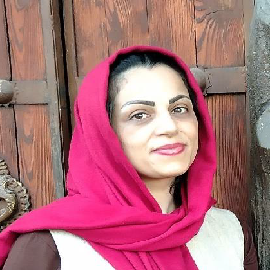
Sogand Zareisedehizadeh
MD, AcupuncturistIranian Scientific Acupuncture Association
Iran
ABSTRACT
Acupuncture has been practiced in different countries for thousands years to treat and/or alleviate many diseases. Based on WHO report, acupuncture can be applied for over 100 diseases. In the last few decades, studies have been done to find its mechanism of action. One of its main mechanisms is modulating the immune function. This review collated available biological evidences for such effects.
In this work, literature search was performed to obtain the relevant papers from 1980 to 2021.
Based on the results, acupuncture exerts its effects through four main categories: First, triggering molecular and cellular changes which starts from the microenvironment in the acupoints. This is the release of anti-inflammatory substances and inhibition of releasing pro-inflammatory factors in the local microenvironment. Second, expansion of the response to the body by activating certain chemokines like bradykinin, histamine-like substances, heparin, IL6, IL1 and TNF-α. Such networking chemokines act on the neuro-endocrine system and nervous system by increasing adrenocorticotropic hormone (ACTH) and serotonin. The later, through pituitary adrenal axis, regulates inflammation and healing process. The action of acupuncture on immunomodulation is also mainly related to the reticular formation of the brain and the associated mediators (CRH, ACTH, cholecystokinin, bombesin, encephalin, dynorphin and etc.) which is involved in feedback controls. Third, endogenous opioids like endorphin are increased in plasma and brain tissue while acupoints are stimulated and also affect the levels of serum immunoglobulin, activity of natural killer cells, generation of cytotoxic T lymphocyte, chemotaxis of monocytes and the levels of interferon γ. Fourth, acupuncture treatments have dual immunomodulatory effect in either Th1-or Th2-skewed conditions to maintain homeostasis. Such effect will be utilized in controlling autoimmune disorders.
It is concluded that acupuncture works as an all-in-one asset to promote homeostasis within the body. Having the biological evidence beside clinical efficacy reports provide a strong fact to integrate this treatment into the conventional medical practice.

Mehdy Ghaeminia
MD,AcupuncturistIranian Scientific Acupuncture Association
Iran
ABSTRACT
Since the start of Corona pandemic there has been a wide range of reactions among integrative medical practitioners. Since there was no well-established conventional therapeutic strategy towards this infection, some practitioners suggested to use the alternative medical approaches to subside the signs and symptoms. Some others preferred to close their clinics to safe guard themselves from being infected. Here, we report the results from an ongoing survey from practitioners in different fields of integrative medicine to evaluate the main stream reaction to such an unpredicted crisis in Iran. Furthermore, we are studying how prepared the integrative medical clinics are to tackle this situation, improve the contribution of integrative health care in treatment and rehabilitation of Covid patients, and to plan for a better reaction to similar situations in the future.
For this study, an online questionnaire was prepared and distributed among those who practice different kinds of integrative medicine in Iran. The results were directly transferred and saved to a database for further evaluation.
Based on preliminary results from 110 participants, the majority of respondents mentioned that, their clinics have been closed for periods of high picks due to governmental acts (91.8%). Sixty eight (61.8% of) active integrative medical clinics had fundamental issues which could make it unsafe regarding the transmission of disease during pandemics. Only less than 5 percent of practitioners had used their methods for patients admitted in hospitals. However, 79.1% had used these methods for rehabilitation of patients affected by corona virus.
Our study shows that, despite high potential of integrative medicine in managing the corona virus infection and rehabilitation of patients, this role has been undertaken by health care system. Additionally, many of practitioners are not ready enough to face the pandemics of infectious diseases.
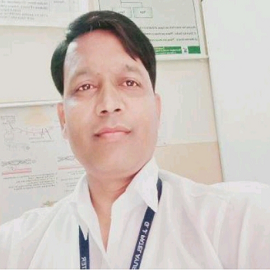
Arvind Paikrao
ProfessorGJPIASR
India
ABSTRACT
The people are already very much undergoing of allopathic medicine due to different disorders across the Globe. One of the major health problem is metabolic disorder where the rate of consumptions of pills is more. This burden of consumption allopathic medicine is again increased much more during currant scenario which is occurred by COVID-19.
By consuming many allopathic medicine, there is lots of burden which is not only it hamper the health of particular person who is consuming it, but also it is hampering over the modern health system, i.e. there was very horrible situation happening in the COVID-19 crisis scenario.
As Ayurveda is the ancient science & also known as the science of the life. Ayurveda does not only tell about the how, one can cure the diseases it also tells about how someone can be leave healthy without diseases. i.e. the objectives of the Ayurveda are as, “swasthasya swasthy rakshanam, & aturasya roga prashamanam cha”.
So, Ayurveda could be helpful over this worst situation (low down the rate of consumptions of pills)? How it can be? It will be explored over here. In other word, Ayurveda, could be very effectively, low down the consumption of pills (i.e.modern medicine). There are many solutions over this problem, such as by eating healthy food, avoiding the junk food, following the dincharya (daily routine), rutucharya (following seasonal regimine), seasonal purification, taking mental care etc & many more.
The “swassthasy swasthya rakshanam” to prove this principle fruitful one should be aware about their daily routine (Dinacharya)
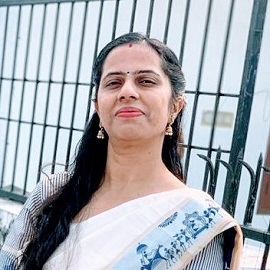
Sunita Singh
Assistant ProfessorNavyug Kanya Mahavidyalaya, University of Lucknow
India
ABSTRACT
Diabetes is a chronic disorder of glucose metabolism and a major cause of heart disease and end-stage renal disease (ESRD) in the worldwide population specially population living in Asia. India is considered as diabetes capital of the world with total cases at around 62 million. In recent times, plant-derived medicinal compounds are being widely used and are suggested by doctors to be used in a number of ailments due to their minimal side effects and numerous positive effects on human health. Out of many such plants, fenugreek (Trigonella foenum graecum Linn) of Fabaceae family which is primarily a spice has attracted the attention of scientists from across the globe. The hypoglycemic effect of fenugreek is well known in diabetic subjects including experimental animals as well as humans. Wonderful functional and medicinal values of fenugreek are attributed to its chemical composition (20-25% proteins, 45-50% dietary fiber, 20-25% mucilaginous soluble fiber, 6-8% fixed fatty acids and essential oils, and 2-5% steroidal saponins. Moreover, some minor components such as alkaloids (trigonelline, choline, gentianine, carpaine, etc), free non-essential amino acids (4- hydroxyisoleucine), and individual spirostanols and furastanols like diosgenin, gitogenin and yamogenin have also been identified and determined as the main component for its various biological effects. Various studies suggested that the presence of 45.4% dietary fiber of which 32% are insoluble fibers and 13.3% are soluble fibers are responsible for its hypoglycemic activities. Apart from hypoglycemic effect, fenugreek is reported to have anticancerous, antimicrobial, antioxidant, nephroprotective, anti-inflammatory effects. Among these beneficial physiological effects, the hypoglycemic property of fenugreek, both of which are mainly attributable to the intrinsic dietary fiber constituent, have promising nutraceutical values.
Day 2 full schedule
November 24, 2023 @ 10:00 - 14:00
Effect of turmeric on glycemic status, lipid profile, hs-CRP and total antioxidant capacity in hyperlipidemic type 2 diabetes mellitus patients
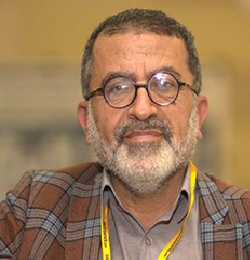
Shahryar Eghtesadi
ProfessorAzad University
Iran
ABSTRACT
Background: Diabetes Mellitus (DM) is the most common metabolic disorder worldwide. The increase in blood lipids and sugar in diabetic patients exacerbates the incidence of DM late-onset complications.
Objective: This study examined the effect of turmeric supplementation on glycemic status, lipid profile, hs-CRP and total antioxidant capacity in hyperlipidemic type 2 diabetic patients.
Methods: In this double blind, randomized clinical trial, 80 hyperlipidemic type 2 diabetic patients were divided into two groups. The intervention group received 2100 mg of turmeric powder daily for 8 weeks; while the placebo group received placebo over the trial period. Body weight, fasting plasma glucose, HbA1c, serum insulin, insulin resistance index, triglyceride (TG), total cholesterol (TC), LDL-c, HDL-c, apolipoprotein A1, apolipoprotein B, hs-CRP, and total antioxidant capacity were measured before and after intervention. Statistical analysis was carried out using paired and independent t and chi-square tests.
Results: Seventy five patients completed the study. After 8 weeks of intervention, the turmeric group showed significant decreases in body weight (P value = 0.000), BMI (P value = 0.000), TG (P value = 0.000), and LDL-c (P value = 0.009) compared with baseline. BMI, TG, and TC decreased significantly in the turmeric group compared with the placebo group (P value < 0.05). No significant changes were observed in body weight, fasting plasma glucose, HbA1c, serum insulin, insulin resistance index, HDL-c, LDL-c, apolipoprotein A1, apolipoprotein B, hs-CRP, and total antioxidant capacity between the two groups after intervention (P value < 0.05).
Conclusion: Turmeric powder improved some fractions of lipid profile and decreased body weight in hyperlipidemic patients with type 2 DM. It had no significant effect on glycemic status, hs-CRP, and total antioxidant capacity in these patients.
A comprehensive representation of Persian Integrative Medicine and a historic pharmacopoeia – Translation and Reassessment

Mahnaz Kazemipoor
Post Doc ResearcherPersian Integrative Medicine
Australia
ABSTRACT
History is a valuable resource and provides the basis for a sustainable corpus of information and a distinctive profile of experiences in times of great global flux. Persian medicine places considerable emphasis on a holistic approach to science and health for human well-being and societal development.
The famous Persian medicine scientists made a pivotal contribution to the development and progress of medical sciences and pharmaceutical practices through their treatises on the essential role of nutrition and natural medicine in the treatment of ailments and for promoting health. Special concepts were developed for the integration of complementary therapies for the body, mind, and soul (holistic health) by providing comprehensive text books.
One of the most famous and comprehensive Persian pharmacopoeias is the Makhzan-ol-Adviya (The Treasury of Medicaments) authored by Aghili Alavi Khorasani. Aghili, as he is known, was one of the prominent Persian physicians of the early 18th century A.D. In The Treasury of Medicaments, Aghili provided a holistic approach to human health, well-being, and treatment from many different perspectives, including ontology, pharmacy, nutrition, philosophy, astrology, etc. Moreover, Aghili followed the Persian medicine principles of a medical system that are based on temperament and personalized medicine.
This study offers an updated interpretation of this historical Persian pharmacopoeia using modern medical terms and research to provide a more accurate and contemporary understanding of Persian Integrative Medicine. Since most of the disorders are due to a lack of harmony with nature, and Persian medicine, as handed down over the centuries, encompasses a variety of natural healing practices, it is hoped that bringing these traditional references up to date, could provide multidimensional ideas and concepts for the promotion and development of integrative medicine including spiritual, emotional, mental, and physical health, in addition to overall well-being.
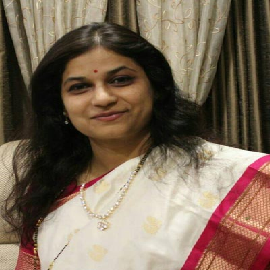
Sumita Satarkar
AcupuncturistSwasthya Santulan Medicare Pvt Ltd. India
India
ABSTRACT
Pulse is one of the most important diagnostic tool used from ancient times, which needs accuracy and focus. Unlike any other
faculty of medicine, this age old science of alternative healing is a study of ‘energy’ which neither can be measured nor be seen .It
can only be palpated at the wrist. Palpation and its interpretation bring forth the detail analysis of energy and its patterns and thus
further can be accurately diagnose the exact illness or disorder. This is called a ‘’ Pulse diagnosis.’’
Because of the need of going deeper into my own understanding and knowledge, I started researching and studying this subject
intensely and got some extraordinary results.
Following is the brief summary of my findings so far as my research is going on at present.
THE PULSE & DIAGNOSIS PATTERNS
The Pulse has dynamism, fluidity, and changeability. It is multi-dimensional in depth, rate, rhythm, strength, shape etc reflecting the
overall wellbeing in person, identifying the state of mental, emotional, and spiritual health.
MY FINDINGS:
The Pulse is the study of around 1,00,000 patients so far, has shown me a clear, multi- layered and textured picture of these
dimensions. This led me go deeper into analyzing it further, to finally find approximately 100 definite patterns, proving as the most
effective guiding tool in diagnosing the complete ill and/or otherwise condition of patients and help to understand the line of
treatment and prognosis of the disease.

Ewa Danuta Bialek
ScientistInstitute of Psychosynthesis
Poland
ABSTRACT
Many years of experience in the science-medicine of diseases, their diagnosis and study of laboratory parameters, made me realize, a person ill since childhood after the traumatic experiences of that period, that I still have not reached the essence of my being, especially homeostasis. I only eradicate its symptoms, obstructing the path to the causes.
The term "homeostasis" had been familiar to me for years, but contact with psychosynthesis and practicing it initially on myself, and then helping others in my practice the next 25 years, made me realize that there is something deeper and more important - homeostasis on many levels of the self: mental, emotional, and above all spiritual. This state expresses inner harmony, discovers the causes of disease at the deep levels of one's being and helps to release them, thus restoring the natural state of being.
Peri-operative Acupuncture at County Health, The Beginning of U.S. Hospital-based Integrated Acupuncture?
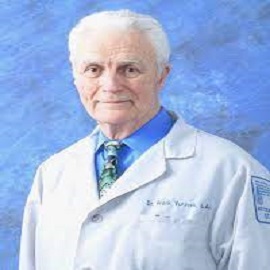
Frank Yurasek
AcupunturistStroger Hospital Pain Clinic
USA
ABSTRACT
History: Since 2011, under the guidance of Dr. Voronov, Chair of Anesthesia, Dr. Maria Torres, Chair of Pain Services, and Queenie Mendoca, (title), Acupuncture Services, Stroger Hospital, Cook County Health & Hospitals Service (CCHHS) were offered primarily for Back, Neck, Shoulder, Hip and Knee Pain by Acupuncture Interns under the supervision of Dr. Frank Yurasek, PhD TCM (China), MS OM, Director of Acupuncture. Over 35,000 patients have received acupuncture for their pain, in response to a call to action by the Joint Commission On Accreditation Of Hospitals and Healthcare Organizations (JCAHO), to stem the tide of over 100,000 drug overdose deaths per year, an exponentially growing problem tracked in the U.S. starting in 1999. Currently: Since then, these acupuncture services have expanded into Pre-Operative Acupuncture, to address Hypertension and Hyperlipidemia, Trauma and Pain Pre-Surgically, Intra-Operative Pain, to Enhance Recovery After Surgery (ERAS) for Tib/Fib Fracture Repair, and Post Surgically both to reduce pain, Post Operative Nausea & Vomiting (PONV) and Post Surgery Cognitive Dysfunction in patients over 60. Recently additional studies on the effects of Acupuncture to reduce pain and the use of opiates in the Emergency Department, as well as the use of Acupuncture in the reduction of Long-Covid Symptoms, using Auricular Acupuncture, are both also being researched at Stroger Hospital, and funded by several multi-year million-dollar Federal Grants. Conclusion: As acupuncture is being accepted as an integrated medical option by both the General Public and Major Hospitals in the U.S., backed by governmentally funded research in the study of its use in the treatment of pain, trauma and disease, it will continue to expand, and morph into an Integrated Medical Service that was first noted by the Bravewell Collaborative Landmark study in 2012.
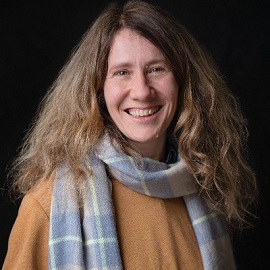
Charlotte Gray
DirectorBlossom Integrative Health Hub
UK
ABSTRACT
Colours are a significant part of our world. From what we wear, to how we decorate our home, to describing emotions – A.A. Milnes character ‘Eeyore’ was often blue, literally and metaphorically - colours are part of our very day life. There is even a colour therapy modality called chromotherapy, which is based on the idea that colour and coloured lights can help treat physical or mental health.
Within homeopathy, colour remedies are relatively new in practice, compared to what is seen as the more traditional remedies. I will offer my experience as a homeopath in prescribing colour remedies as part of my practice. I will discuss their place alongside other remedies, the results that they have yielded for my patients and the potential they have in enabling healing.
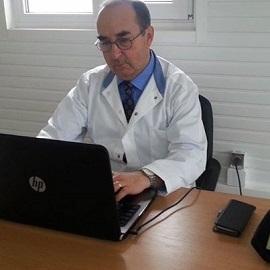
Ladislau Rosenberg
PresidentRomanian Society for the History of Pharmacy
Romania
ABSTRACT
This paper presents the remarkable role and importance of natural therapies throughout history and their implications for the prevention and treatment of various ailments in the 21st century. Integrative medicine, which some call: complementary, alternative, natural, holistic, etc., has its origins in ethnoiatry, from the rich medical traditions of various peoples around the world. The Americans have called it Complementary and Alternative Medicine (C.A.M.), a name that has spread around the world in recent years. The traditional therapeutic methods have been living in the last period, a real rebirth worldwide and they have been recognized by the World Health Organization (WHO). The most well-known natural methods, some of which have a multi-millenary existence and are widely used worldwide in current medicine, are: acupuncture, apitherapy, aromatherapy, ayurveda, diet therapy, phytotherapy, heliotherapy, homeopathy, hydrotherapy, manual therapies, etc. It is necessary to mention first of all Ayurveda, the ancient Indian medicine, which is documented for over 5000 years and acupuncture, part of Traditional Chinese Medicine (T.C.M.), which is over 3500 years old, or phytotherapy and apitherapy, related to the beginnings of human existence on Earth. In the third millennium, we are witnessing a re-evaluation of traditional therapeutic methods, which have been adapted to the scientific requirements specific to our day and have been accepted by the medical world. Integrative medicine, which brings together the exceptional achievements of modern medicine, with the healing power of various "soft" therapies, is the way forward in the 21st century. The cultural-educational project “History of Pharmacy Traditions in Sibiu”, active in Romania from 2016, have an important role in the correct informations of the persons interested in the benefits of: medicinal and aromatic plants, essential oils, bee products, homeopathic remedies, healthy foods, etc .




